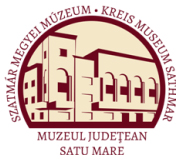Marta, Livius et al.: The Late Bronze Age Settlement of Nyíregyháza-Oros „Úr Csere” (Satu Mare, 2010)
VIII. Conclusions. Nyíregyháza-Oros site and its significance for the reearch of the Late Bronze Age
The comparative analysis of the pottery of the Lăpuş II-Gáva I horizon in the Carei area and the Satu Mare Plain revealed, beyond many common elements, the presence of some regional features 354. The pottery from Carei area is primarily individualized by the presence of the thumb-impressed appliqué belts355 and by the large amount of bowls with inverted rim356. Their origin is attributed to inheritances from the Hajdfibagos-Cehăluţ group, descending up to the Otomani culture357. They are elements that highlight the fingerprint of the Hajdfibagos-Cehăluţ cultural group visible in the HaA inhabitation horizon from Carei area. In the end, it can be concluded that the researches from Nyíregyháza-Oros are likely to provide new elements concerning the late development of the Hajdfibagos- Cehăluţ cultural group and to specify more accurately its contribution to the processes of birth of the subsequent cultural manifestations in the north Hungarian Plain and north-west Transylvania. 354 Marta 2009, p. 88-91. 355 Németi 1990, p. 40, PI. 1/15, 11/3, 13/5. 356 Németi 1990, p. 41. 357 Németi 1990, p. 42, 46. 72
